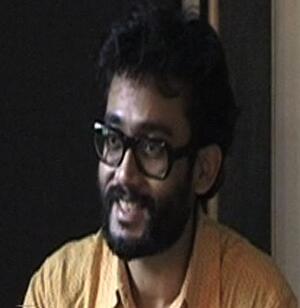Abhishek Hazra: New Witnessing is emerging
Bangalore 19 December 2008: At the opening of the Doors of Perception Conference in Bangalore in 2003 a remarkable trailer was welcoming the guests: light music was accompanying an image of a ‘graphic’ dancer circling and opening up the performance space; growing from a small and distant figure, circling closer and closer till his wide open arms were embracing the whole hall in bright yellow, green and orange making reference to the rising sun.
Bangalore 19 December 2008: At the opening of the Doors of Perception Conference in Bangalore in 2003 a remarkable trailer was welcoming the guests: light music was accompanying an image of a ‘graphic’ dancer circling and opening up the performance space; growing from a small and distant figure, circling closer and closer till his wide open arms were embracing the whole hall in bright yellow, green and orange making reference to the rising sun.
It was of stunning beauty. Later I learned that Abhishek Hazra had made this work and that it was based on a film of a dance of rickshaw drivers. Since then we have had the opportunity to exchange ideas on several occasions in which I had the pleasure to enjoy Hazra’s love of science and technology studies, his profound knowledge of the western as well as the eastern tradition and his capacity to travel between the world of art, culture and philosophy. Spending lots of time on the Internet, with all his skills and knowledge, Abhishek’s views on how things move and take shape, are sensitive and well informed. This time we also met in Bangalore; he just arrived and we were about to leave to go home.
----------------------
Read the interview here

 Caroline Nevejan
Caroline Nevejan


 Abhishek Hazra,
Abhishek Hazra,